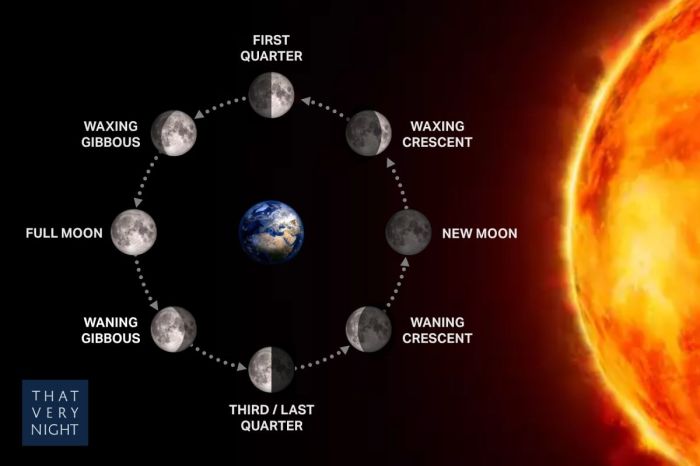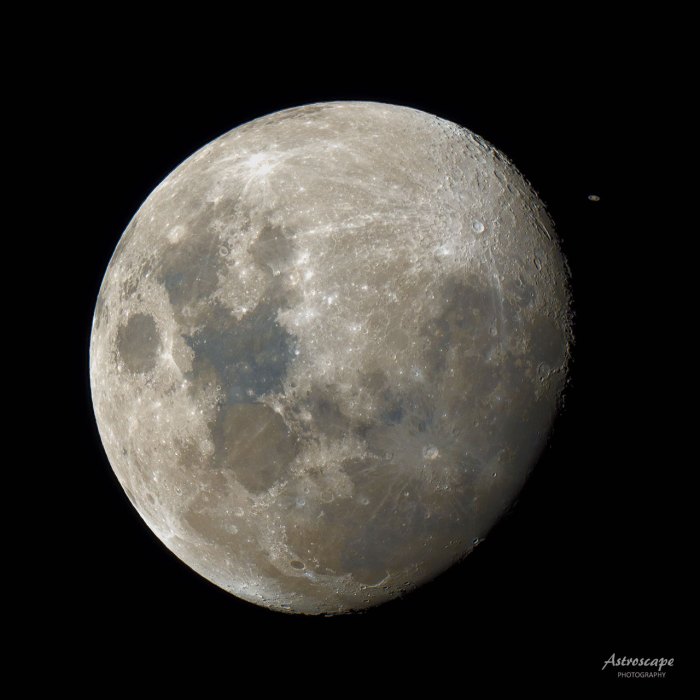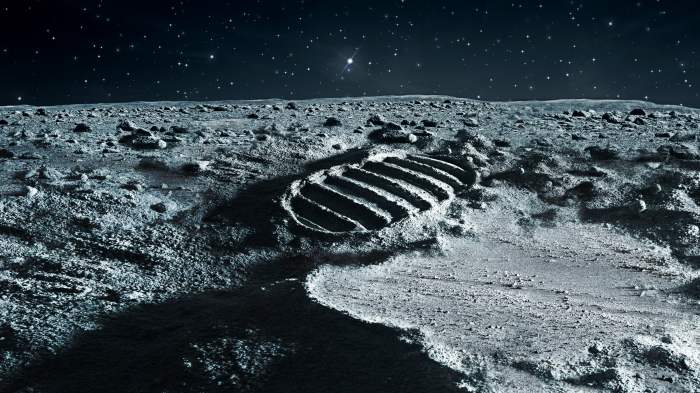Whats behind the moon gd – Embark on an extraordinary journey to the celestial realm beyond our Earth, where the moon’s enigmatic presence captivates the human imagination. Prepare to delve into the mysteries that shroud what lies behind the moon, a realm steeped in scientific theories, cultural beliefs, and artistic interpretations.
Throughout history, the moon has tantalized us with its ethereal beauty and hidden secrets. Now, we embark on a quest to unravel the enigma, exploring the scientific theories and hypotheses that attempt to explain what may exist in the vast expanse behind our celestial neighbor.
What is Behind the Moon?

For centuries, the far side of the Moon has fascinated scientists and astronomers, shrouded in mystery and hidden from our view. With the advent of space exploration, we have gained a deeper understanding of our celestial neighbor, revealing the existence of a vast and intriguing expanse beyond the visible lunar surface.
Unraveling the secrets behind the Moon’s enigmatic presence, scientists have delved into the composition of its minerals. Among these, the co3 aso4 2 compound has garnered attention for its unique properties. Its discovery sheds light on the formation and evolution of the Moon, offering insights into its geological history and potential resources.
Scientific Theories and Hypotheses
Various scientific theories and hypotheses have emerged, attempting to unravel the enigma of what lies behind the Moon. One prominent theory suggests the presence of a hidden celestial body, dubbed “Anti-Earth” or “Planet X.” This hypothetical planet is believed to orbit the Sun in a path directly opposite to that of the Earth, effectively concealed from our line of sight by the Moon.
Lunar Exploration and Discoveries

Lunar exploration has played a pivotal role in advancing our understanding of the moon. From the early Apollo missions to the recent Artemis program, numerous missions have ventured to the moon, providing invaluable insights into its geology, composition, and history.
One of the most significant discoveries made during lunar exploration was the confirmation of the moon’s lack of an atmosphere. This finding has had profound implications for our understanding of the moon’s surface processes, such as the formation of craters and the weathering of lunar rocks.
Unidentified Lunar Objects
During lunar exploration missions, astronauts and scientists have occasionally reported observing unusual or unexplained objects on the moon’s surface. These observations, often referred to as unidentified lunar objects (ULOs), have sparked considerable speculation and debate.
- One of the most famous ULOs is the “Moon Rabbit,” a dark, amorphous object that was photographed by the Apollo 15 mission in 1971. While some researchers believe the Moon Rabbit to be a natural rock formation, others have suggested it may be an artifact of extraterrestrial origin.
- Another well-known ULO is the “Lunar Pyramid,” a pyramid-shaped structure that was allegedly observed by the Apollo 10 mission in 1969. The existence of the Lunar Pyramid has been the subject of much controversy, with some researchers claiming it is a natural formation while others maintain it is an artificial structure.
The significance of ULOs lies in their potential to provide evidence of extraterrestrial activity or the presence of advanced civilizations on the moon. However, due to the lack of conclusive evidence, the true nature of ULOs remains a mystery.
Theories and Speculations

The hidden side of the moon has sparked imaginations and fueled speculation for centuries. Numerous theories have emerged, ranging from the plausible to the outlandish, attempting to explain what might lie beyond our view.
Scientific Theories
One theory suggests that the moon’s far side is covered in a thick layer of dust and debris, creating an impact crater-filled landscape. Another theory posits the existence of an ancient ocean on the moon, with evidence supporting the presence of water-bearing minerals.
Extraterrestrial Theories
More speculative theories involve the presence of extraterrestrial life. Some believe the moon’s far side could harbor alien civilizations or artifacts, protected from Earth’s view by the moon’s curvature. Others propose that the moon is a hollowed-out spacecraft or a base for extraterrestrial beings.
Weaknesses and Strengths
Each theory has its strengths and weaknesses. Scientific theories are supported by observable evidence and logical reasoning, while extraterrestrial theories rely heavily on speculation and lack empirical evidence. However, both perspectives continue to fuel the fascination with the moon’s hidden side, driving further exploration and scientific inquiry.
Cultural and Mythological Perspectives

The moon has captured the human imagination for centuries, inspiring countless stories, myths, and legends. Across cultures, the moon has been associated with various celestial bodies, deities, and supernatural beings, influencing human beliefs and shaping our understanding of the cosmos.
In many cultures, the moon is associated with fertility and growth. In ancient Egypt, the moon goddess Isis was worshipped as the protector of women and childbirth. In Greek mythology, Artemis, the goddess of the hunt, was also associated with the moon and childbirth.
Similarly, in Native American cultures, the moon is often seen as a symbol of fertility and renewal.
Influence on Storytelling
The moon’s mystique has influenced human storytelling for ages. In ancient Greek literature, the moon is often associated with madness and transformation. In Shakespeare’s play “Othello,” the title character is driven to jealousy and murder under the influence of the moon.
In modern literature, the moon continues to serve as a powerful symbol, inspiring works such as Ray Bradbury’s “The Martian Chronicles” and Ursula K. Le Guin’s “The Left Hand of Darkness.”
Common Themes, Whats behind the moon gd
Despite cultural differences, several common themes emerge in lunar mythology. Many cultures believe that the moon has a direct influence on human affairs. In astrology, the moon’s position is said to affect personality traits, emotions, and even physical health. Additionally, many cultures associate the moon with the supernatural, believing that it can be a portal to other realms or a place where spirits reside.
Artistic Interpretations and Depictions: Whats Behind The Moon Gd

Throughout history, artists have sought to capture the mystery of what lies beyond the moon. Their interpretations reflect the cultural and scientific beliefs of their time, as well as their own imaginations.
One of the earliest known depictions of the moon’s backside can be found in a Babylonian clay tablet from the 7th century BC. The tablet shows a crescent moon with a face on one side and a series of lines on the other, which may represent mountains or craters.
In the Middle Ages, European artists often depicted the moon as a flat disc with a human face or a series of symbols. These images were often influenced by religious beliefs, which held that the moon was a reflection of the divine.
As scientific knowledge about the moon increased, artists began to depict it more realistically. In the 17th century, Galileo Galilei made a series of drawings of the moon that showed its craters and mountains. These drawings were widely reproduced and helped to change the way people thought about the moon.
In the 19th century, artists began to explore the possibility of life on the moon. Jules Verne’s novel “From the Earth to the Moon” (1865) featured a group of explorers who travel to the moon and find a thriving civilization there.
In the 20th century, the Apollo missions finally brought humans to the moon. The images taken by the Apollo astronauts provided a wealth of new information about the moon’s surface. These images also inspired a new wave of artistic interpretations, which often reflected the excitement and wonder of the space race.
Today, artists continue to be fascinated by the moon. Their interpretations reflect the ongoing human fascination with this mysterious celestial body.
Symbolism and Metaphors
The moon has been a source of symbolism and metaphor throughout history. In many cultures, the moon is associated with femininity, mystery, and change.
The moon’s phases have also been used to symbolize different stages of life or the cycle of birth, death, and rebirth.
In literature and art, the moon is often used to create a sense of atmosphere or mood. A full moon can be seen as a symbol of romance or mystery, while a new moon can be seen as a symbol of new beginnings.
The moon is a powerful symbol that can be used to evoke a wide range of emotions and ideas. Its presence in art and literature is a testament to the enduring human fascination with this celestial body.
FAQ Resource
What is the most widely accepted scientific theory about what lies behind the moon?
The prevailing scientific theory suggests that the moon’s far side is composed of the same materials as its visible side, primarily silicate rocks and metals.
Have any spacecraft ever explored the far side of the moon?
Yes, several spacecraft, including the Soviet Luna 3 and the Chinese Chang’e 4, have successfully captured images and conducted scientific studies of the moon’s far side.
What cultural beliefs and myths surround the moon?
Across various cultures, the moon has been associated with deities, fertility, and the passage of time. In some traditions, it is believed to influence human emotions and behavior.